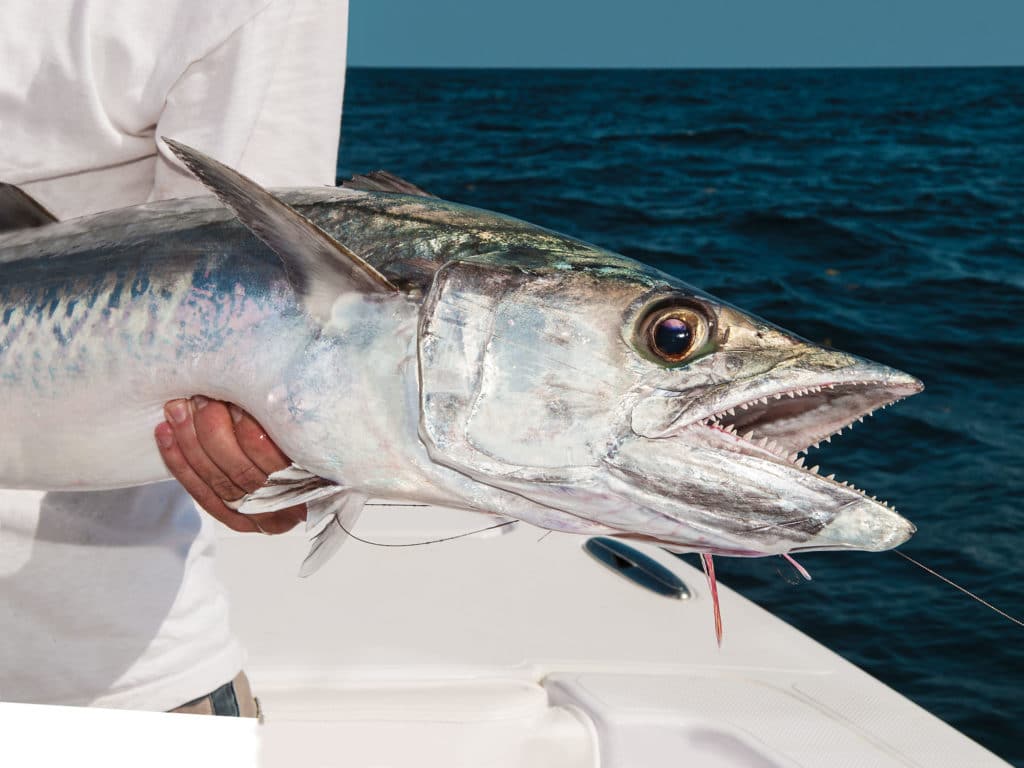
TROPHY TIME:
The silver missile leapt from the water, flanks and teeth glistening in the sun, a small treble hook planted securely in its jaw.
As it hit the water, the clicker on the portside reel in the T-top holder screamed an alarm as the speed demon on the other end tried to put as much distance as possible between it and the boat.The surface strike and run of kingfish are an adrenaline junkie’s high and the reasons these fish are so popular. There is no place kingfish are more revered than North Carolina, where they respond to a variety of fishing techniques over a long season.
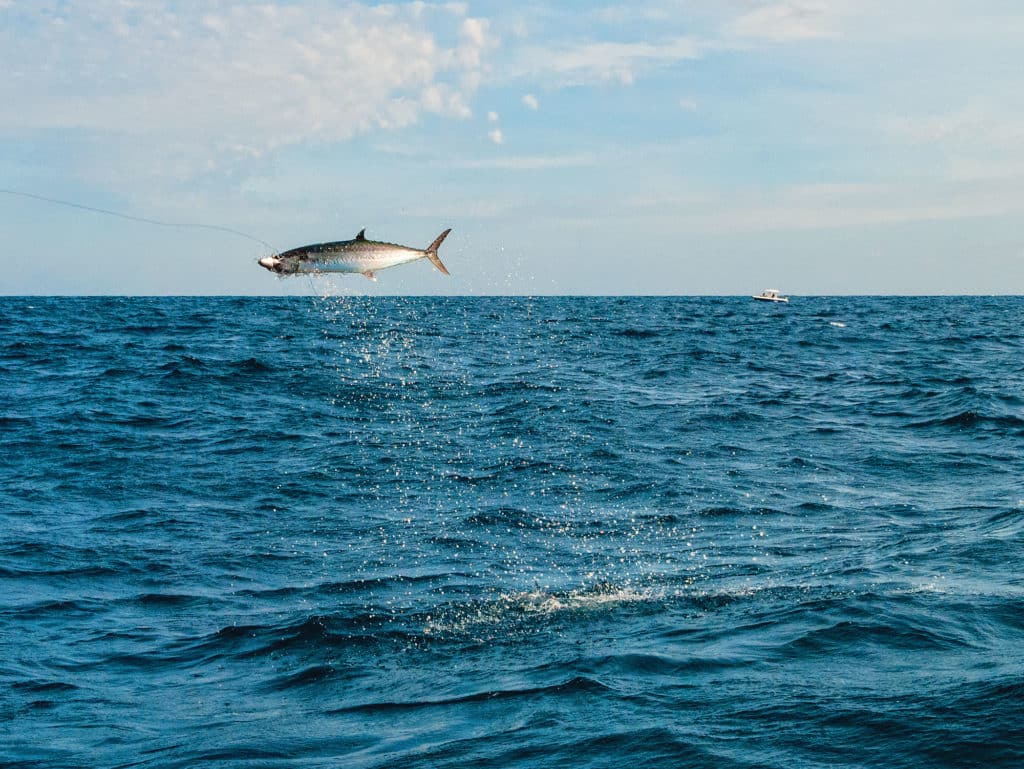
AIRBORNE:
The Pro Knows
Going on 30 years, Jodie Gay has been chasing Carolina kingfish recreationally and as a tournament angler and commercial hook-and-line fisherman. He’s won a number of early North Carolina kingfish tournaments, taking second place at the 2007 SKA nationals, 10th in 2008 and first in 2009. His most recent team holds the record for the largest king ever caught in a tournament in North Carolina, a 68.9-pound smoker. So the man’s got cred.
About 15 years ago, Gay started Blue Water Candy Lures, and his initial products were kingfish and offshore trolling rigs with Mylar skirts because no one else was making them at the time. “When fish are biting, the Mylar doesn’t make much difference,” he says, “but when it’s slow, Mylar out-fishes regular skirts 10 to 1. I started making them for a few captains, and today the company offers hundreds of lures and components for offshore fishing.”
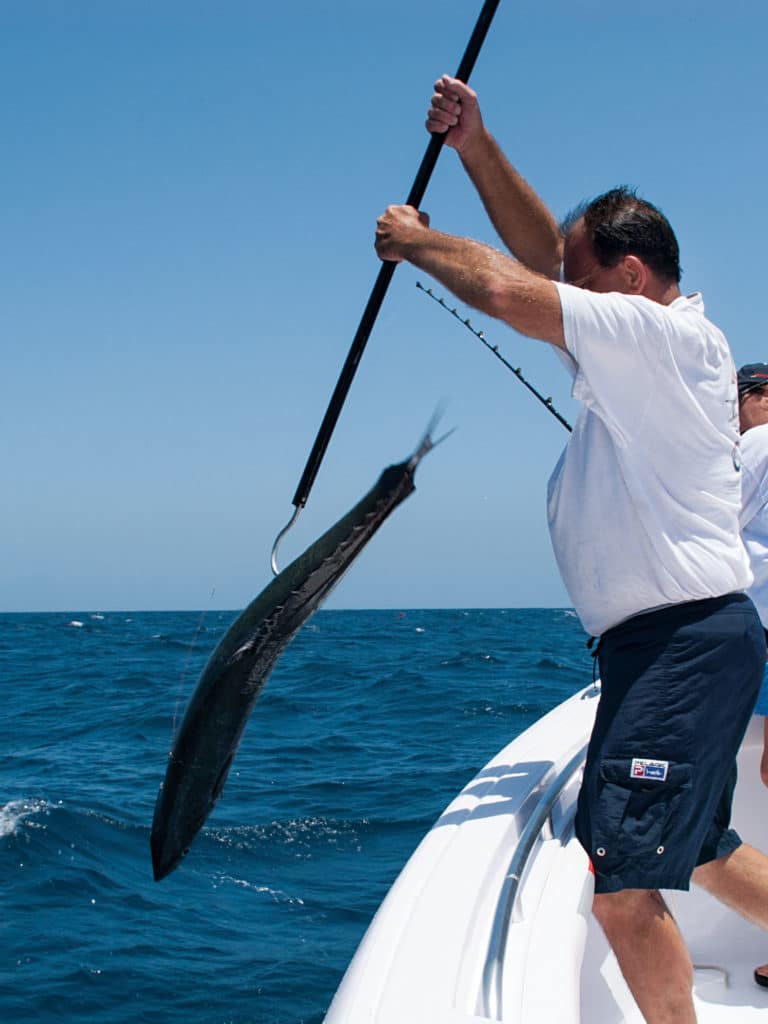
WELCOME ABOARD:
They Never Leave
The latest data says there are two stocks of kingfish, one migrating around the Gulf of Mexico from Florida to Texas, and the second from Florida north to the Carolinas and beyond. But according to Gay, there’s also a body of resident fish that appears to migrate east and west, never leaving North Carolina waters.
The season kicks off in late May or June, with resident fish in full structure mode. “No structure, no fish,” Gay explains. “They are on pretty much any rock, reef or wreck in 65- to 100-foot depths.” Most are 5 to 15 pounds, which are still fun to catch and better to eat. They feed on any small baitfish and respond well to trolled dead baits. It stays the same through the summer, with each structure spot holding a cluster of kings, so be prepared to run and gun from spot to spot.
“September is when the big kings start to show up,” he says. “Those fish move in tighter to shore. Even anglers on the piers catch a fair number of big kings in the fall as they tear up schools of menhaden and mullet. We even catch them in the outflow of big rivers like the Cape Fear. This time of year, live-bait fishing can be absolutely fantastic.” The big fish hang out until the water temperature drops, and by Thanksgiving they move offshore and south, while the resident fish hold on hard bottom west of the Gulf Stream. It might seem counterintuitive, but the fishing actually lasts longer (into November) in the northern part of the state where the Gulf Stream swings in closer to shore, keeping the water warm.
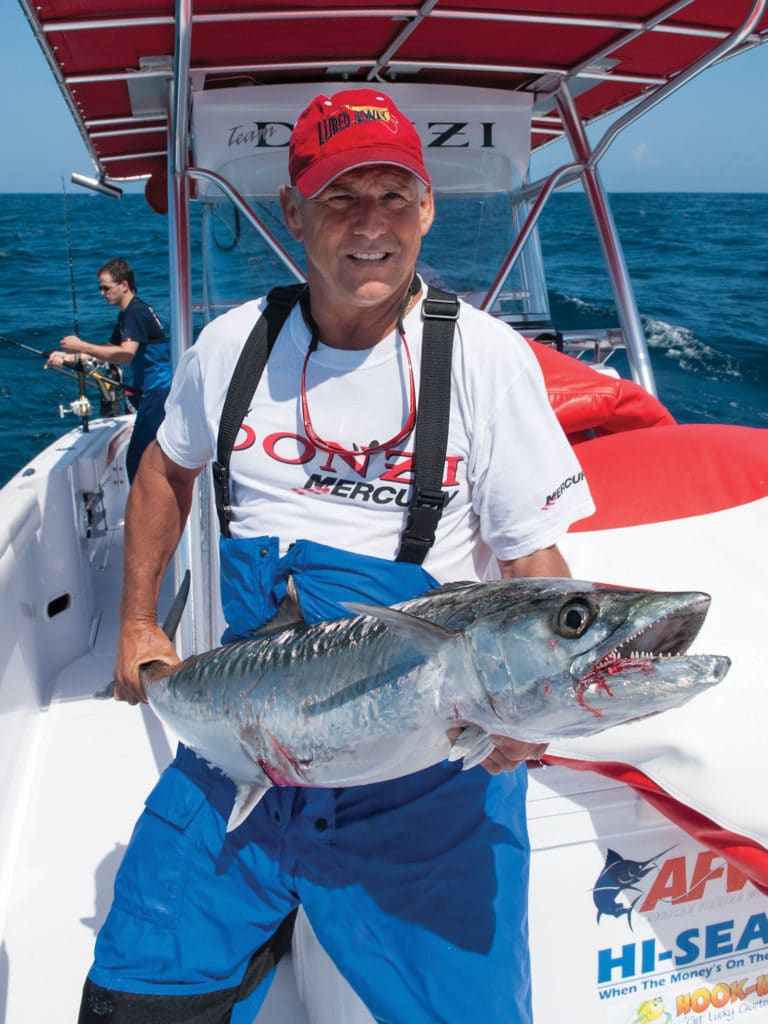
SLICE AND DICE:
Gearing Up
Tackle for kings is surprisingly light. Because slow-trolling is the norm, conventional reels the size of the Penn Fathom 40 loaded with 20-pound monofilament are preferred. A big king will make a blistering first run, so line capacity is very important. The terminal end gets a few feet of 20- or 30-pound fluorocarbon leader because kingfish have keen eyesight. Most kingfish rods are 7-foot and rated for 10- to 20-pound line. Fast action is best, but with a soft tip to protect against line breakage. It offers better lure and bait presentation, and works equally well with live bait, dead bait and spoons.
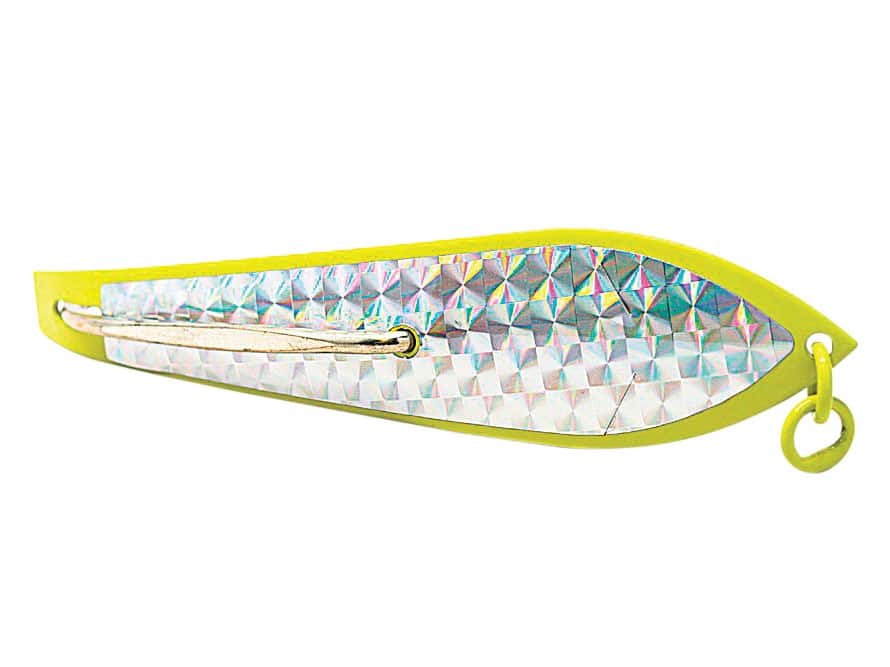
Drone Spoon
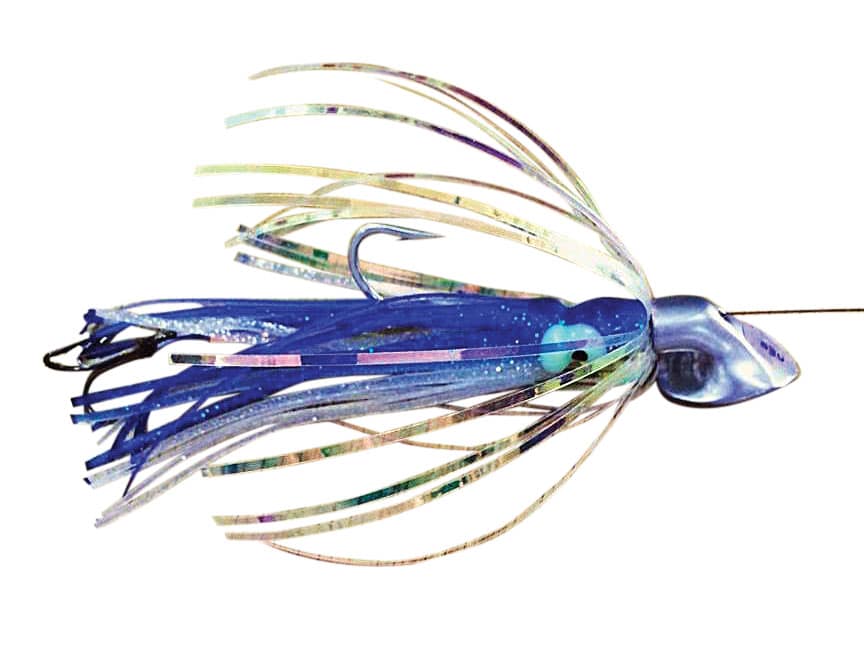
Blue Water Candy Wedgie
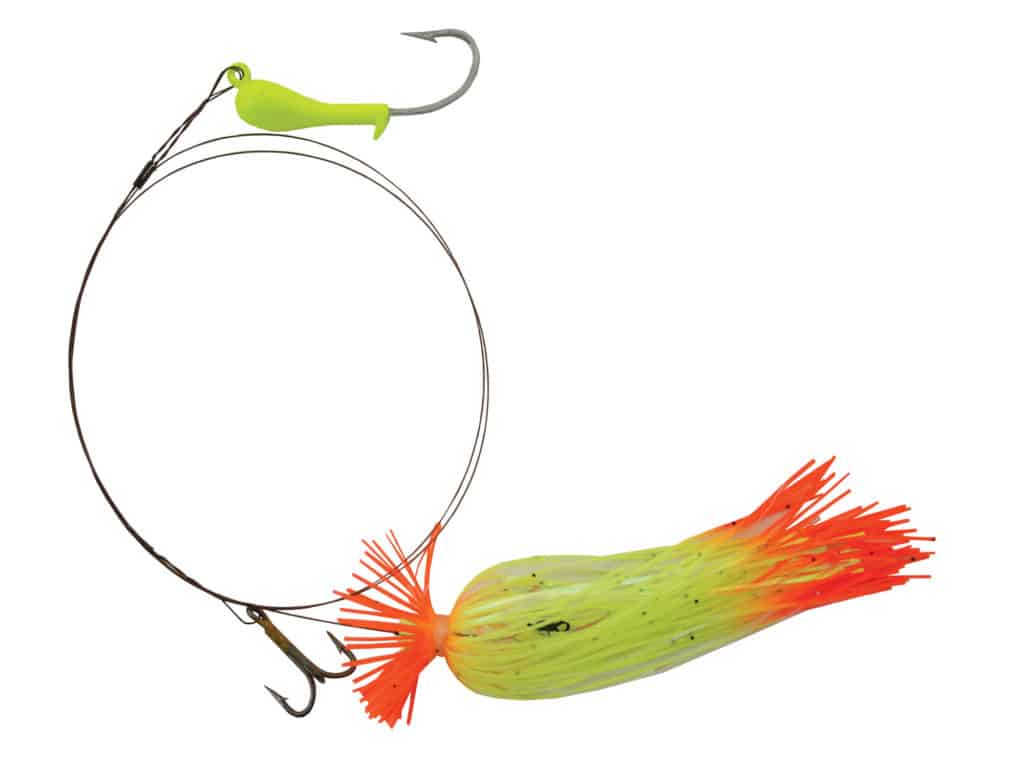
Blue Water Candy Dead Bait Rig
Kings have incredibly sharp teeth, so rigs end in No. 4 camo stainless-steel wire or 30- to 50-pound titanium multistrand cable. Terminal rigs carry one or two No. 4 trebles as stinger hooks, depending on the length of the baitfish. The front hook, a single, holds the bait on the rig while the trebles are lightly pinned along its back so they don’t impede swimming action.
Sometimes the tail treble is left dangling to lie alongside the bait. Dead-bait rigs have weighted heads to keep the bait upright, and both styles of rigs have colorful skirts for flash. Gay’s company makes one called the Wedgie with a sliding wedge-shaped lead-head that planes down a few feet, making it an ideal flat-line rig. Another is simply called the Dead Bait King Rig, and it features a half-ounce jig head to be used either on a flat line or deep.
Drone spoons are still popular for kingfish in the Carolinas, and the presentation is no different from trolling dead-bait rigs: A wire leader is connected behind planers, either on downriggers or flat-lined.
Accurately placed deep baits are important to success, and downriggers are the preferred method for controlled depth fishing. Typically, one rig is trolled at one-third the water depth and the other at two-thirds. If the fish show a preference, the depth is adjusted accordingly. If you don’t have downriggers, you can use planers to get down, though you sacrifice pinpoint depth control.
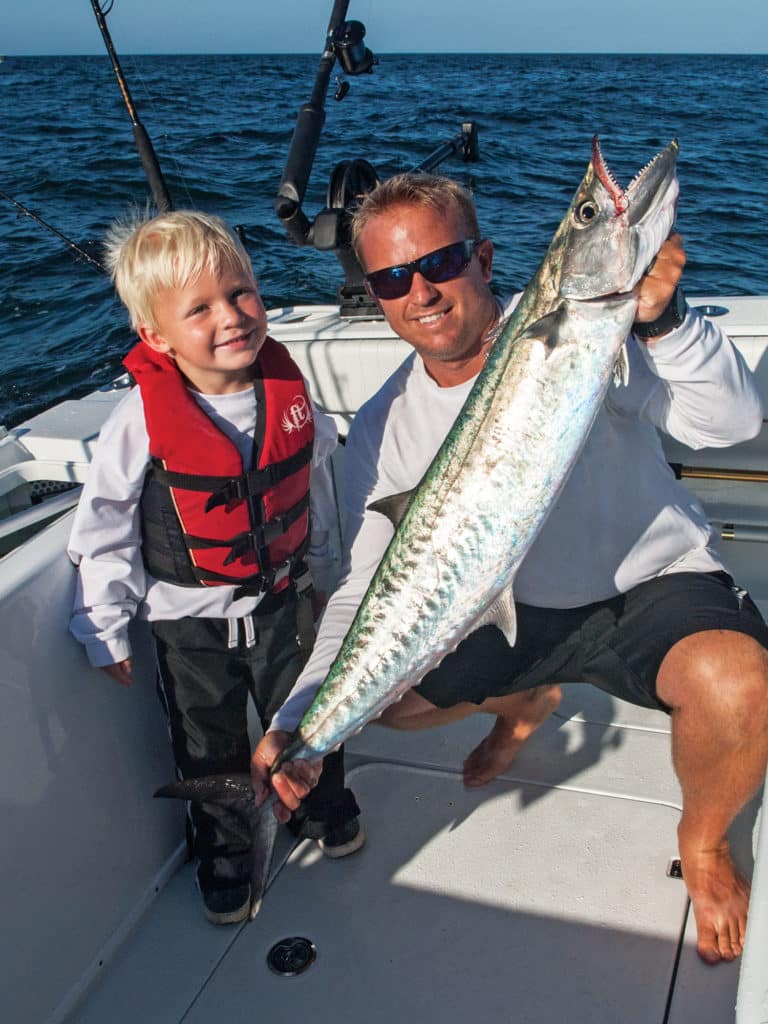
FUN SIZE:
Practice Session
I spent a day in mid-June fishing with Gay, his teammate Russell Weaver, and Brad Knight, owner of Onslow Bay Boatworks and a formidable tournament competitor in his own right. With the arrival of the big fish still a couple of months away, the plan was to troll dead bait along structure spots for resident fish.
“Cigar minnows, small ballyhoo and spoons work just fine through the summer,” Gay advises. He set out a four-rod pattern with two up and two down. The first flat line was set more than 100 feet back, the second about 60 feet. Both had Wedgie rigs, one with a cigar minnow on the single treble, the other a ballyhoo with a double-stinger hook setup.
The Wedgie not only dives a few feet, keeping the bait in the water, but it also imparts an enticing wiggle that makes it come alive behind the sparkly skirt. The first downrigger was armed with a standard kingfish dead-bait rig with a cigar minnow and dropped back 50 feet from the release clip. The weight was lowered to 50 feet in 70 feet of water before he repeated the process, lowering the second bait to 30 feet.
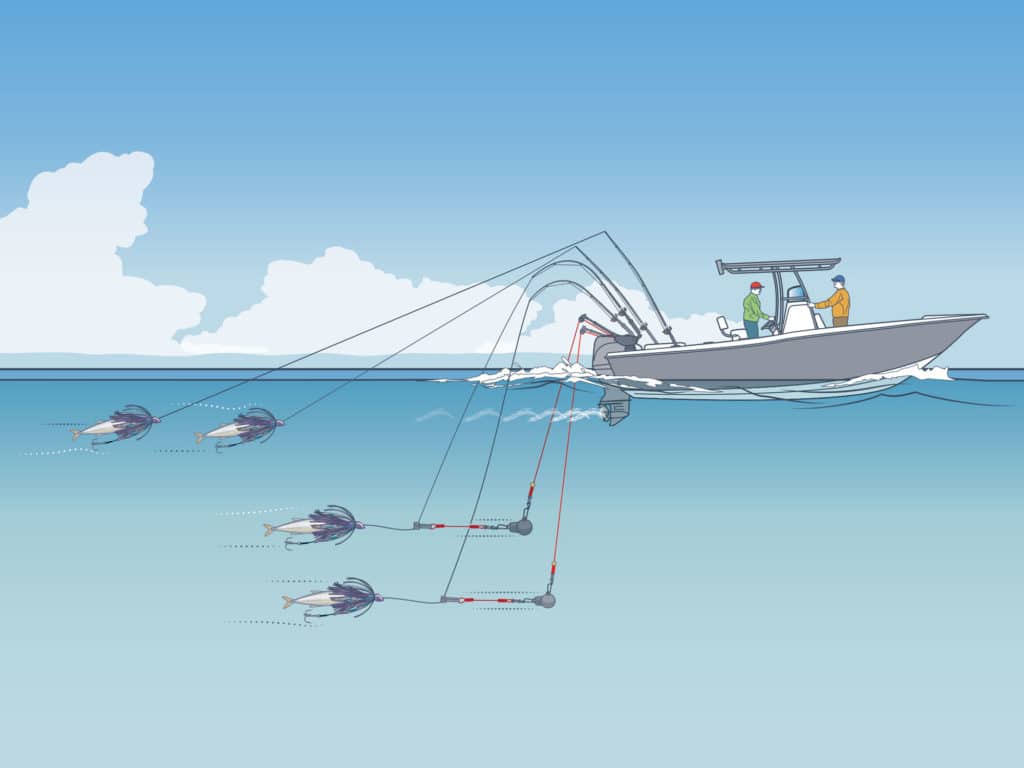
Basic Spread
“When we’re fishing live bait in tournaments, we might add a center bait close to the boat, sometimes right in the prop wash,” Gay says. “You can also use chum or menhaden oil dribbled into the water from a drip bottle to bring the kings to your pattern.”
Trolling for kings is done at relatively slow speeds. Dead-bait rigs work from 1 to 7 knots, and you can mix them with spoons if you keep the speed at over 3 knots. Live baits are pulled from idle speed to 2 knots so they won’t spin or tire quickly, and you can mix in dead baits as long as you keep the speed around 2 knots. We hit a half-dozen spots by noon, concentrating on midwater structure and catching one or two fish from 5 to 15 pounds at each spot, which is typical early in the year.
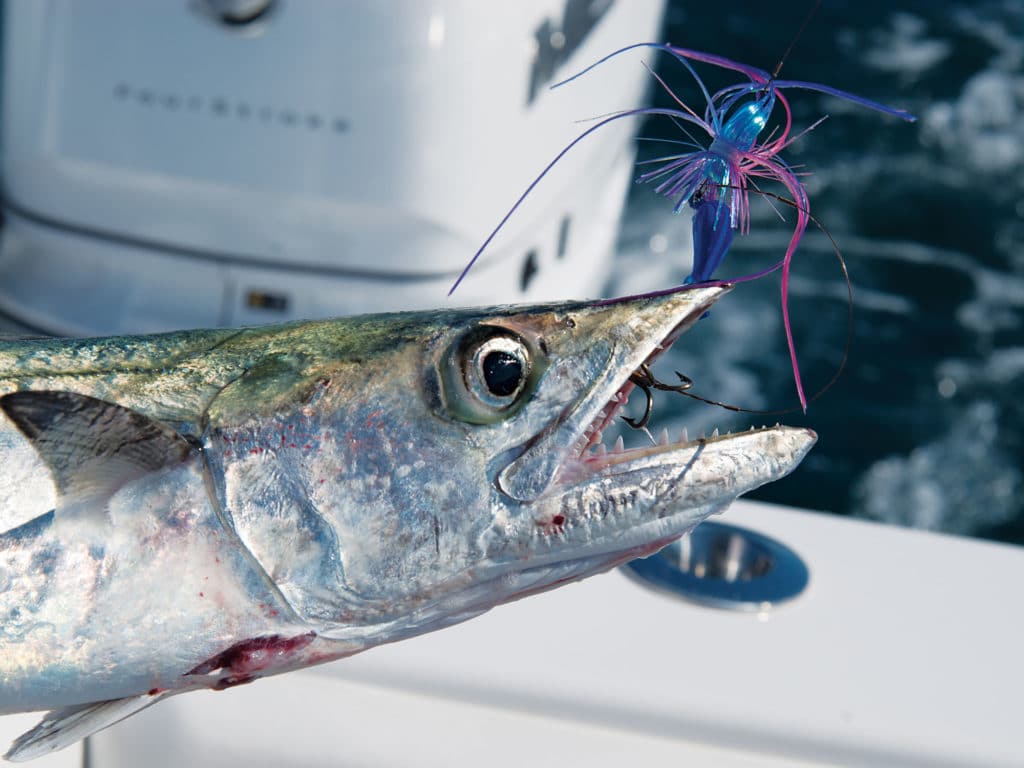
LOSS PREVENTION:
Smokers’ Lounge
When the bigger fish move up from the south later in the year, the trolling techniques are the same, but the cast net comes out and the day starts by filling the livewell with menhaden, rarely hard to find along the beachfronts. The dead-bait rigs are switched out for live-bait rigs with skirts and no weight, and the chum and menhaden oil are put into play.
The closer fish on shallower structure come alive, but the kings will forgo structure to attack schools of bait concentrated near the beach, around shoals, inlets and river mouths during outgoing tides. The fish run larger, 25 to 35 pounds. The largest fish show a preference for feeding around the shallow shoals that abound at the northern and southern extremes of the North Carolina coast and, when they are in residence, 40-pounders can be commonplace. Many of the fall tournaments are won with 50-pound-class fish taken on the shoals. If a big king is on your bucket list, this is the time and place to catch one.









